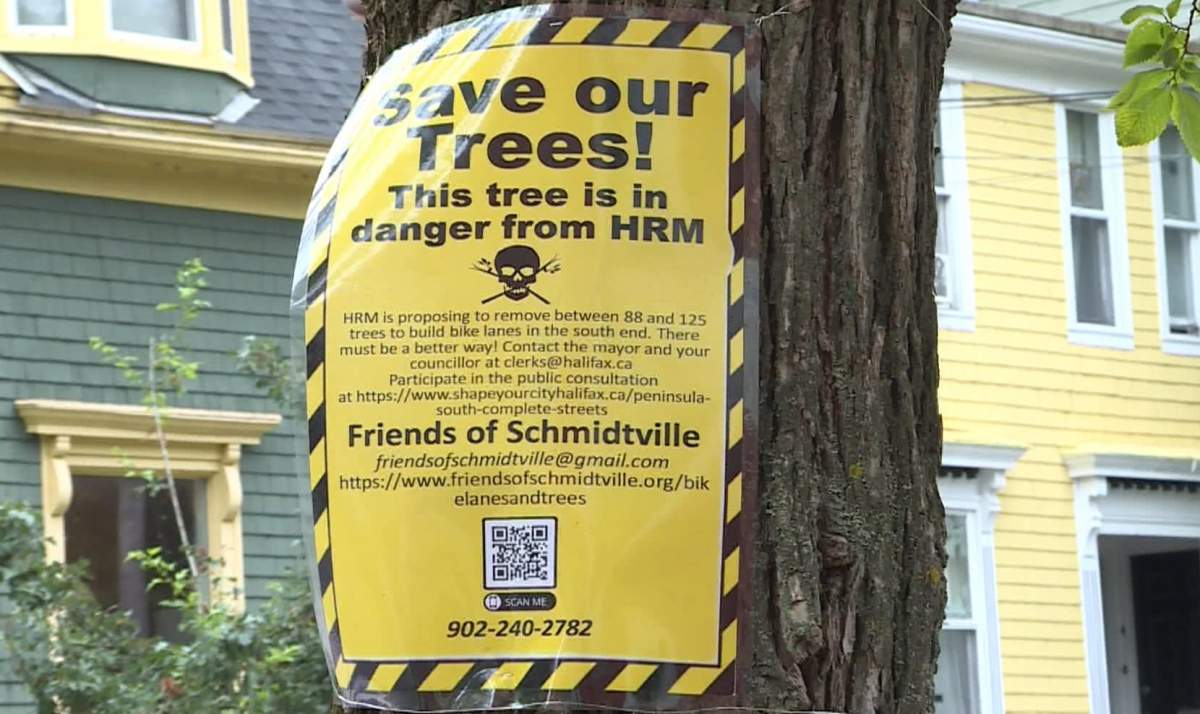As part of the integrated mobility plan Halifax Regional Municipality is looking to expand its network of bike lanes. For those who cycle on the peninsula, an expansion into south end streets is welcome news, but not everyone is happy with the plan.

“Right now we don’t have a safe and connected cycling network,” said cyclist Ben MacLeod.
“We have a lot of fragmented lanes, so these cycling lanes on University, Morris and so on are essential to creating a connected and safe cycling network.”
READ MORE: Hundreds ride bikes in Halifax to show solidarity with injured cyclist, call for safer roads
MacLeod says not everyone is comfortable cycling with traffic, and that protected lanes will encourage more people to get out and ride.
Currently the municipality has eight proposed concepts under consideration to expand the network in the south end. There’s a concept for Morris Street, three concepts for University Avenue, two concepts for Robie Street and two concepts for a western connection using either South Street or Oakland/Cartaret streets.
Some trees will have to be removed to make way for the bike lanes with anywhere from 36 to 125 trees pegged for removal depending on which combination of concept designs are chosen.
“Surely there are better ways to accommodate the cyclists and maintain our trees,” said South End resident Karen Mitchell.
Mitchell is a member of the group Friends of Schmidtville which has started posting signs on trees in the south end to bring attention to the fact the city may cut them down in favour of bike lanes.
“These trees are important – they are so important – and in this time of climate crisis when we have extremely high temperatures, they’re cooling effects,” said Mitchell.

Get breaking National news
This year, for the third year in a row, Halifax has been designated as one of the UN’s tree cities, but Mitchell says destroying old trees goes against the spirit of being a tree city.
READ MORE: ‘Senseless act’: Trees damaged by axe inside Halifax Public Gardens
“If we start removing our trees in the south end when the time comes to install more bike lanes that means that other trees will come down as well and we could lose that designation of ‘city of trees.'”

MacLeod says there are cyclists too, who are unhappy about the mass removal of trees.
“It’s not an issue of bike lanes versus trees.”
“It’s an issue of the degree to which we’re prepared to allocate existing road space to serve other modes of transportation like bicycles.”
MacLeod suggests the city cut back on on street parking to make more room for bike lanes, something Mitchell says she’s not sure would be possible.
“I’m sure there has to be some parking because you’re talking about an older group of people in this area” said Mitchell. “So I’m sure people rely on their cars and there’s not many places to put cars.”
Instead the Morris street resident suggests moving the proposed bike lane from Morris Street to Clyde Street, which she says is already largely concrete and doesn’t have the same large trees that Morris Street does.
MacLeod points out, however, that Morris Street is a key route for cyclists.
“I think that providing a cycling network that’s not only safe but direct is really essential to getting people on bikes, so I wouldn’t support any bike routes that are excessively circuitous or diversionary,” said MacLeod.
The municipality has just wrapped up it’s second phase of public engagement and staff are now compiling results into a staff report which will be used to provide Regional Council with recommendations. Once a design is chosen, phased construction of the new bike lanes will begin within the next two to five years.
- Carney’s Liberals hold narrow lead over Conservatives as 2025 ends: poll
- Canadian MP says Israeli soldiers shoved her as delegation denied entry
- Ontario influenza ICU admissions up 127% in past week, hospital association warns
- Canada’s grocery code of conduct is coming in 2026. What it means for you













Comments